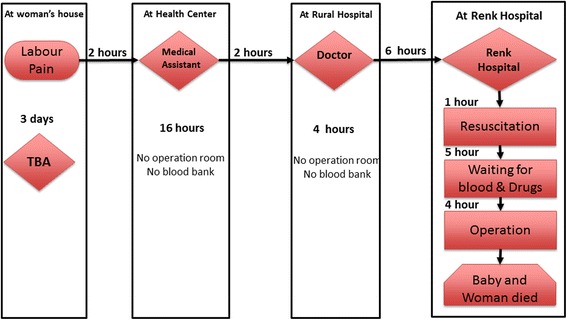Fig. 6.

Multiple referral pattern 2. She was a very young primigravida living in a village 170 km south of Renk town. Her family called for the TBA to come to deliver her when her labour began. Day after day passed until she became restless, febrile and with no progress. They decided to seek professional healthcare on the 4th day. They arrived to the nearest health centre at 8 pm. The health centre is run by a medical assistant and a village midwife but does not have an operation room or blood bank. The medical assistant referred them to the rural hospital. On the 5th day at 1 pm the medical assistant called the doctor in charge of the rural hospital to inform him about the case and requested an ambulance for the referral. Unfortunately, the ambulance was not available. The road between the two towns is a dirt road that deteriorates during the rainy season. An hour later they managed to transfer the patient to the rural hospital that did not have an operating room or blood bank. The patient was only given antibiotics and referred to Renk hospital for an emergency caesarean section. At 11 pm the ambulance arrived at the maternity ward of Renk Hospital. The patient was given antibiotics and prepared for an emergency caesarean section. Due to delays in preparation and blood donation, the patient was only ready for the operation by 12 noon. The woman passed away during the operation. (11RMD)
